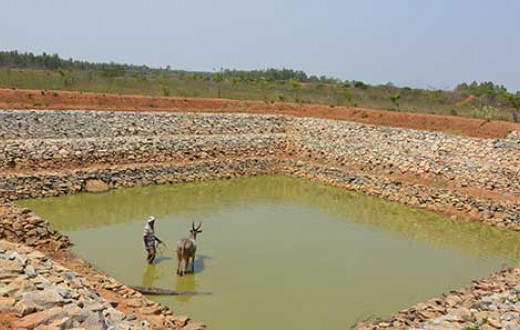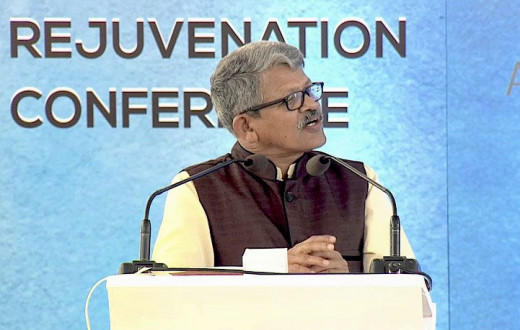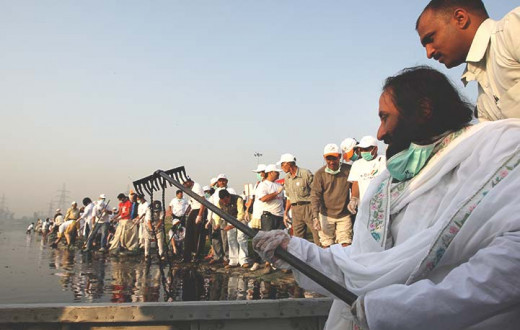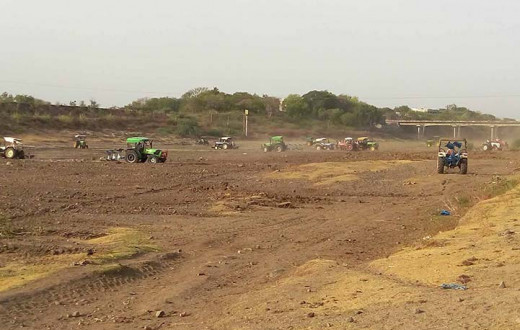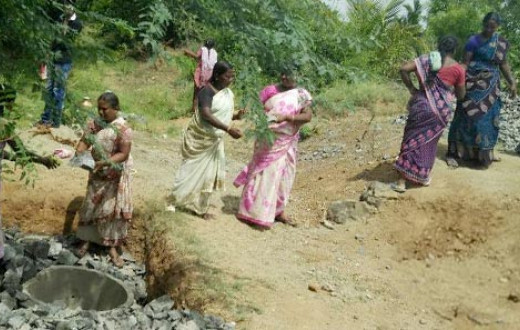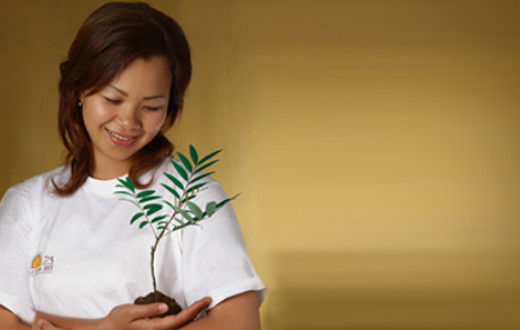Overview
“Since my childhood, I’ve never seen so much of water in the nallah (stream) and in my farm well.”
– Pandurang, a farmer from Maske Village, Latur
Rains are the only source of water in Maharashtra’s Latur district. In the recent years, owing to the erratic nature of the monsoons and the overuse of groundwater, drought has become fairly common in this area. Over the course of many dry summers, all water sources including local rivers and streams have dried, and groundwater has been exhausted. In many areas, the farmers have barely any water left for drinking, let alone farming.
Inspired by Gurudev Sri Sri Ravi Shankar, The Art of Living launched the Jal Jagruti Abhiyaan, a project to rejuvenate rivers and nallahs in a few districts of Maharashtra, primarily through desilting activities, was undertaken in 2013.
“We have always used the water from the holy rivers like Ganga and Yamuna to purify ourselves, but today we have reached a point where we have to purify this water. So, we are waging war against pollution in our rivers. The government alone cannot do it. We will have to come together.”
~ Gurudev Sri Sri Ravi Shankar
As of Jan 2016, work on 22 rivers and nallahs in more than 150 villages spread across Jalgaon, Satara, Nagpur Jalna, Latur and Osmanabad districts has been undertaken. Work includes desilting and construction of cement bunds and gabion structures. The rivers include:
- Gharni, Tavarja, Rena, Jana, Manjara, Mudgul - Latur district
- Terna, Rajegavi, Benitura - Osmanabad district
- Narola, Kasura, Galghati - Jalna district
- Vena - Nagpur district
- Waghur - Jalgaon district
- Mann - Sangali- Satara district
- Gomai - Nandurbar
- Shivganga - Pune
- Waghadi, Punzan, Kalki, Shivnadi - Nashik
Working closely with the local community, we have been able to rejuvenate many of these rivers that have been dry for decades. Subsequently, hundreds of acres of dry abandoned farmlands have been reclaimed, forest and green cover has increased, soil erosion and rainwater runoff have been significantly restricted. Today, there is ample water in all the villages where we initiated work.
What change did we bring?
So far, the outcome of this project has been very encouraging. In spite of long summers and delayed monsoons, water is available in the borewells up to a distance of 2 km on either side of the river/nallahs where the desilting work has been carried out.
In stark contrast, no water is available in the parts where desilting has not been done so far, and borewells have to be dug to a depth of 1000 ft. to get water. Hundreds of acres of dry abandoned farmlands were reclaimed, forest and green cover increased, soil erosion and rainwater runoff significantly restricted. Today, there is ample water in all the villages where we initiated work.
Due to the dramatic increase in the groundwater level in the villages, the lives of more than 1 lakh villagers has improved. Here is the impact and our work in numbers:
- Tawarja river now holds 230 crore liters of water along 13 km of rejuvenation of the total 25 km.
- Gharni river, which was once a nallah because of accumulated silt and growth of shrubs in the river basin, is cleaned and widened to hold 45 crore liters of water after the rainfall.
- About 180 crore liters of water will now percolate in Gharni’s river basin.
- It is estimated that the water supply will be enough to grow three yields per year for Maharashtra’s farmers.
- During the clean-up, around 1,76,96,475 cubic meters of silt was removed from river basins and was spread in nearby fields to improve land fertility.
- Groundwater table levels have increased considerably, and water is available at a depth of 50 ft. where desilting work has been carried out.
- In the areas impacted by the project, farmers have planted over two crops in their fields.
“Due to the river rejuvenation project, financial upliftment has taken place. I am grateful towards Art of Living and Gurudev Sri Sri Ravi Shankar for the work.”
~ Ramesh Solankhe, a farmer
“Despite the water scarcity, I chose to farm as a profession. As the river rejuvenation work progressed, I am proud and grateful that I remained determined to go ahead with the farming profession. I have become financially independent as the water problem has been sorted. I am determined to take farming to the next level and make it a natural farming model.”
~ Bhaskar Solankhe, a youth farmer
Chief Minister of Maharashtra applauds the initiative
“Thousands of people like you, in the villages, talukas, and districts are fighting for water conservation on an extremely large scale. Youth, mothers, sisters, elderly people all are working for this cause. In Maharashtra, our Gurudev Sri Sri Ravi Shankar’s The Art of Living has done a wonderful job, and others have also done this work together with the people.”
~ Devendra Fadnavis, Chief Minister, Maharashtra
How does the journey look so far?
The project progress is as follows:
- Reached out to 100,000 villagers in 150 villages across 6 districts
- Rejuvenated 12 rivers
- Silt from more than 200 Km of the rivers has been removed
- 30 structures built/repaired with the help of the Government of Maharashtra
How did we work?
The long-term impact that we achieved is the sense of ownership that the local community has developed about local water resources. They have now started working proactively for water retention and are taking up more responsibility for the issues that they are facing. We have employed the following strategies on this project:
- Desilting existing rivers and water streams to recharge the groundwater table
- Planting trees alongside the river course
- Teaching the villagers to do away with water guzzling chemical fertilizers and switch to organic farming
- Introducing the villagers to drip irrigation
- Making the stakeholders an integral part of the project and involving them in all stages of the project
What did we learn?
Most regions in India that lie south of the Vindhyas are currently suffering from acute water shortage. We cannot depend on government interventions alone to solve this problem. We have to actively engage the local community and local bodies to work towards a solution.
How can you contribute?
In phase II of the project, many more initiatives are being undertaken that include putting up RO water plants, training, and continuous support for zero-budget organic farming, drip irrigation, and de-addiction programs. We are actively looking for partnerships to help fund these initiatives.

